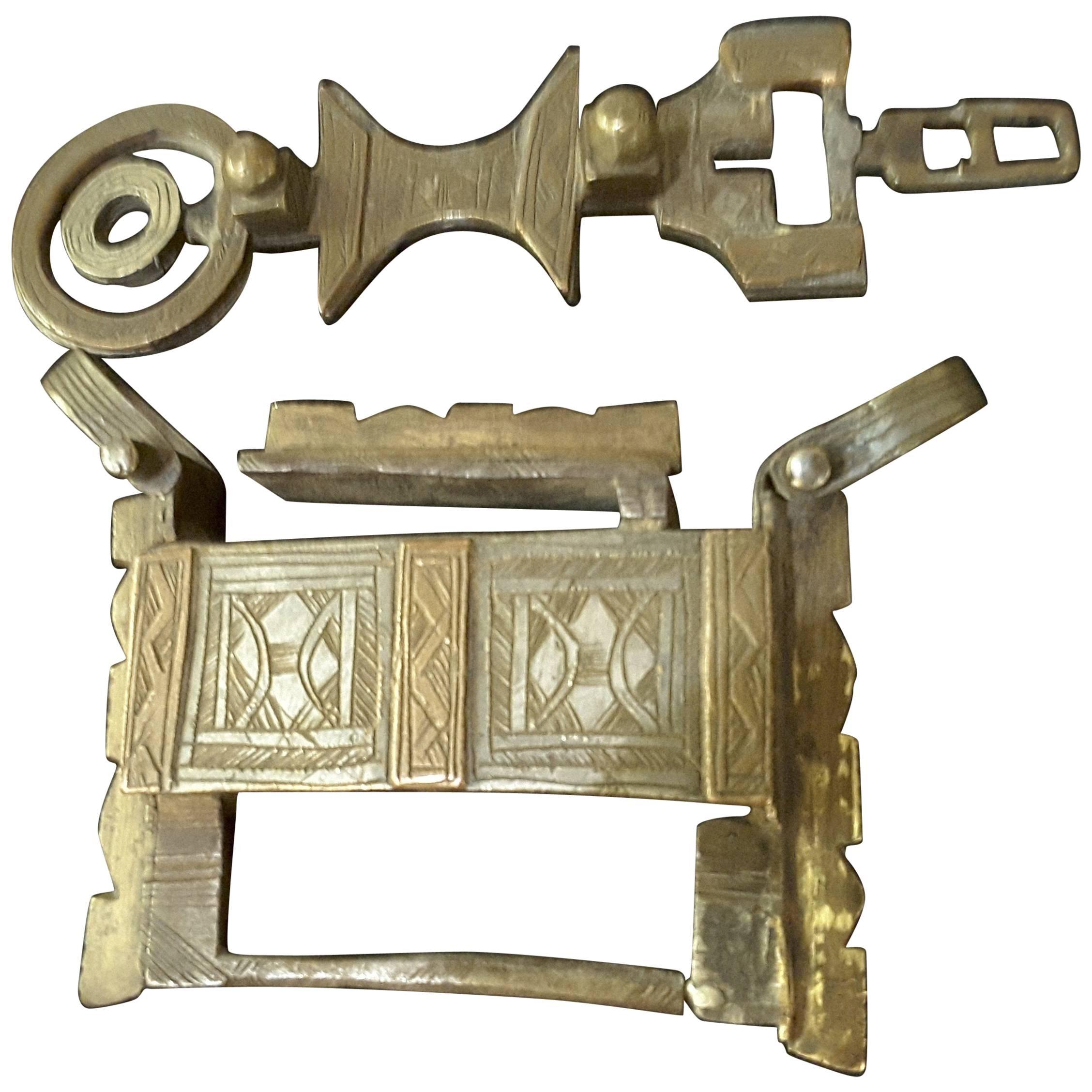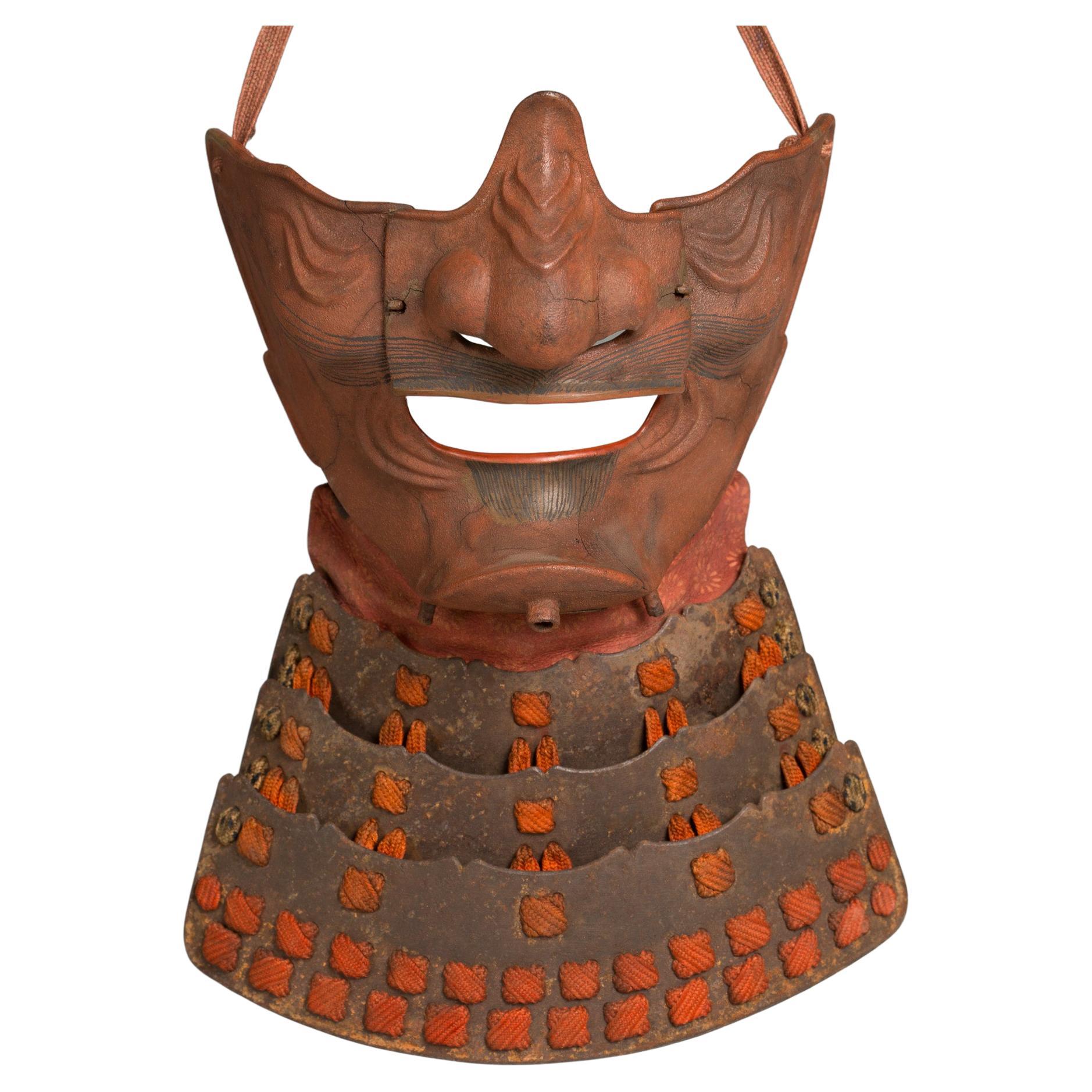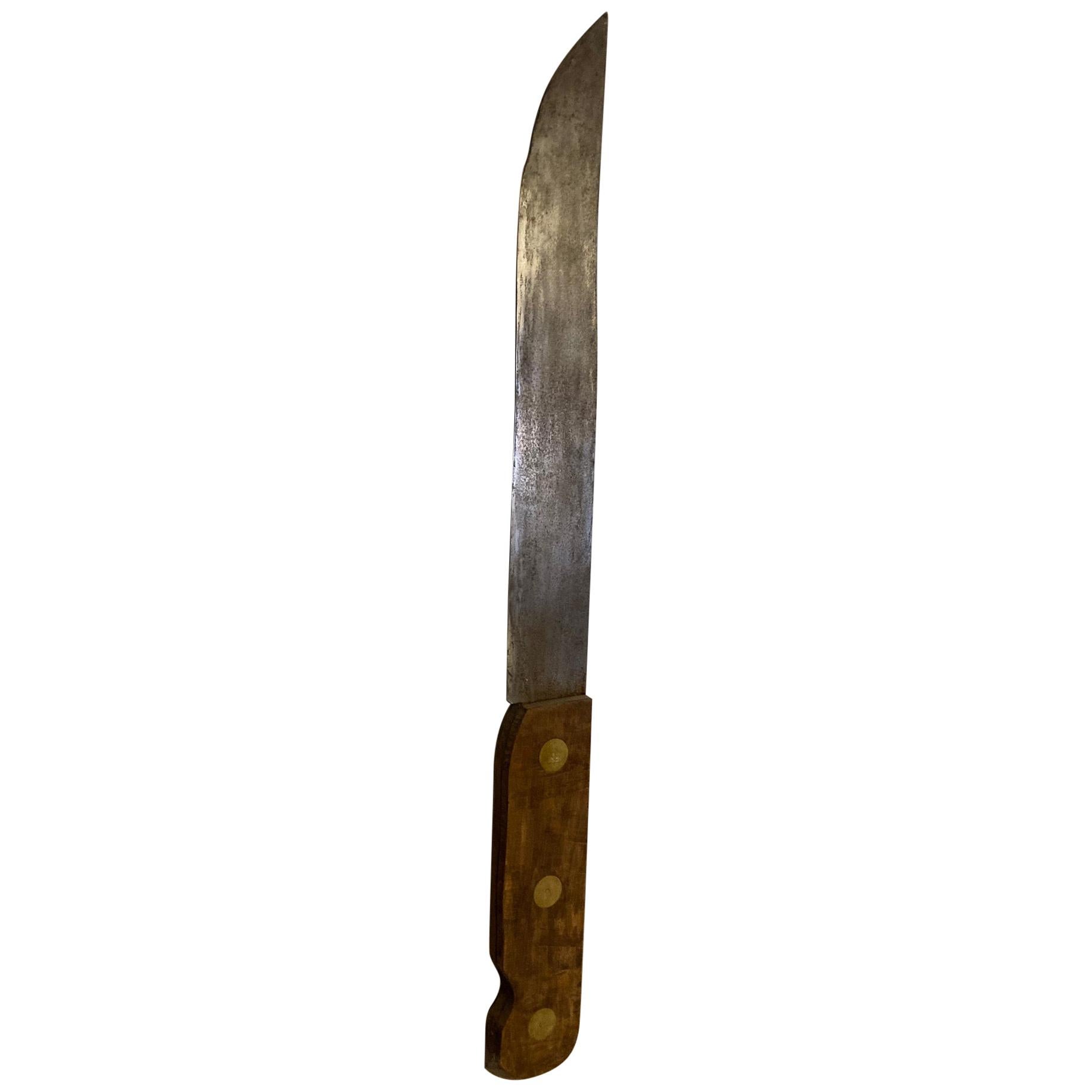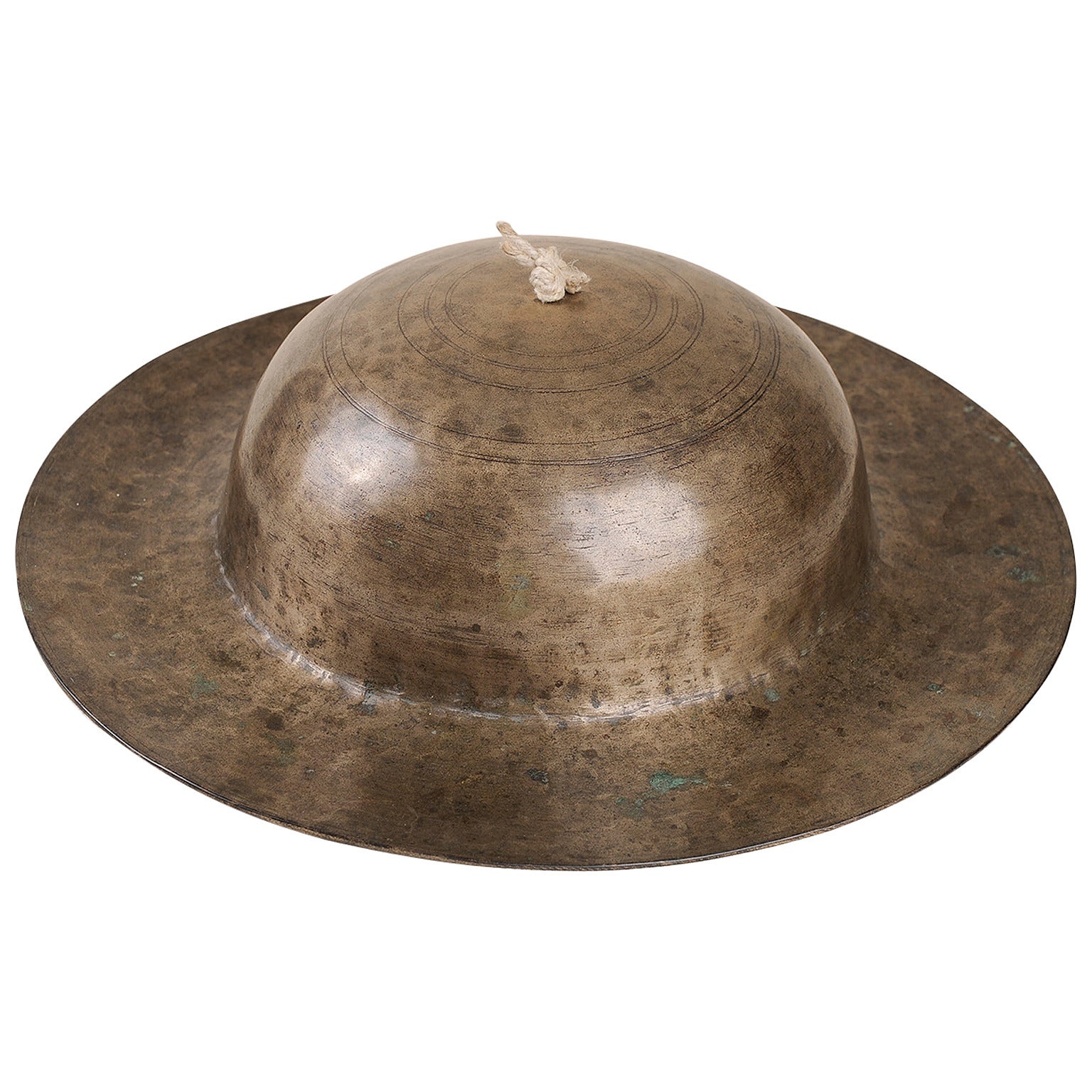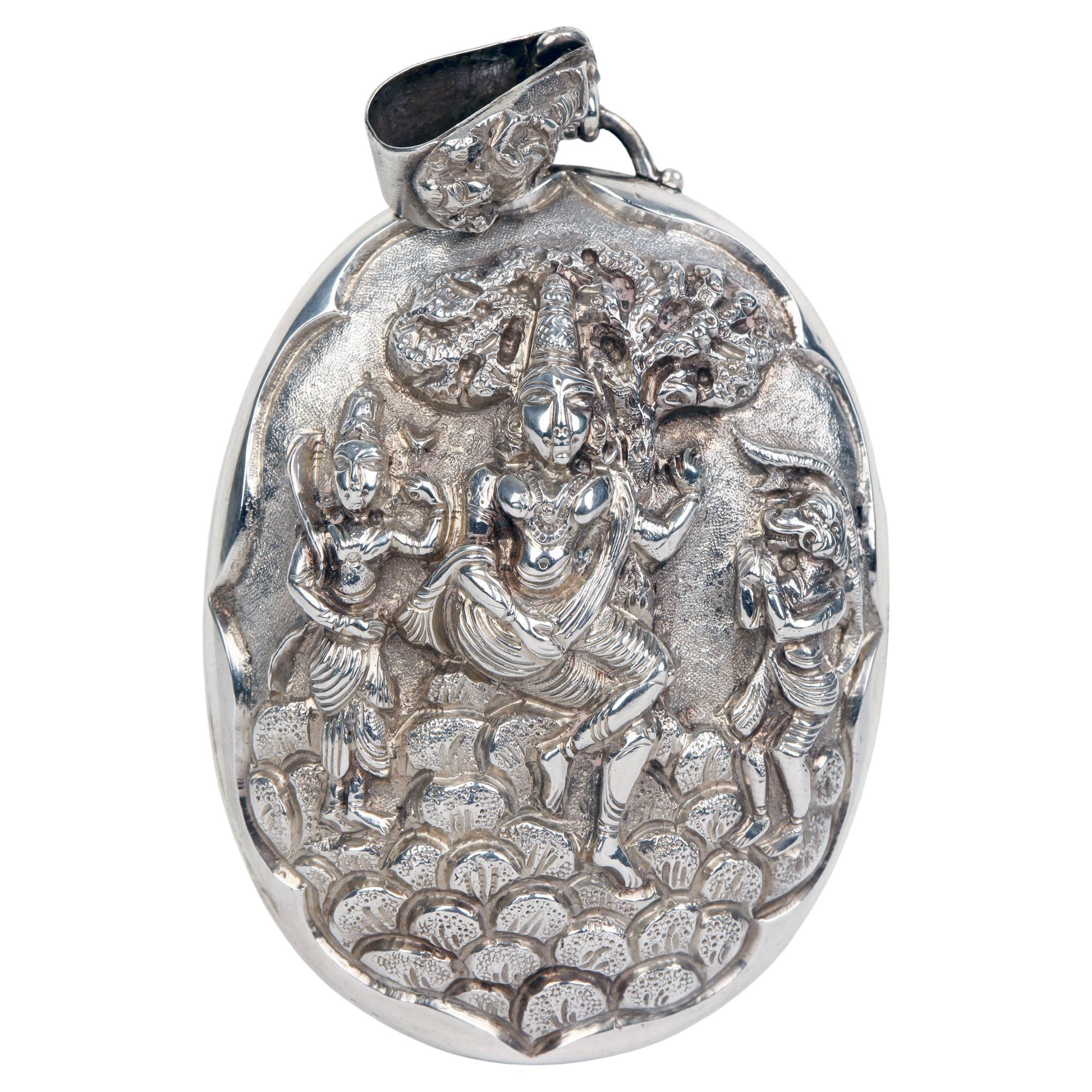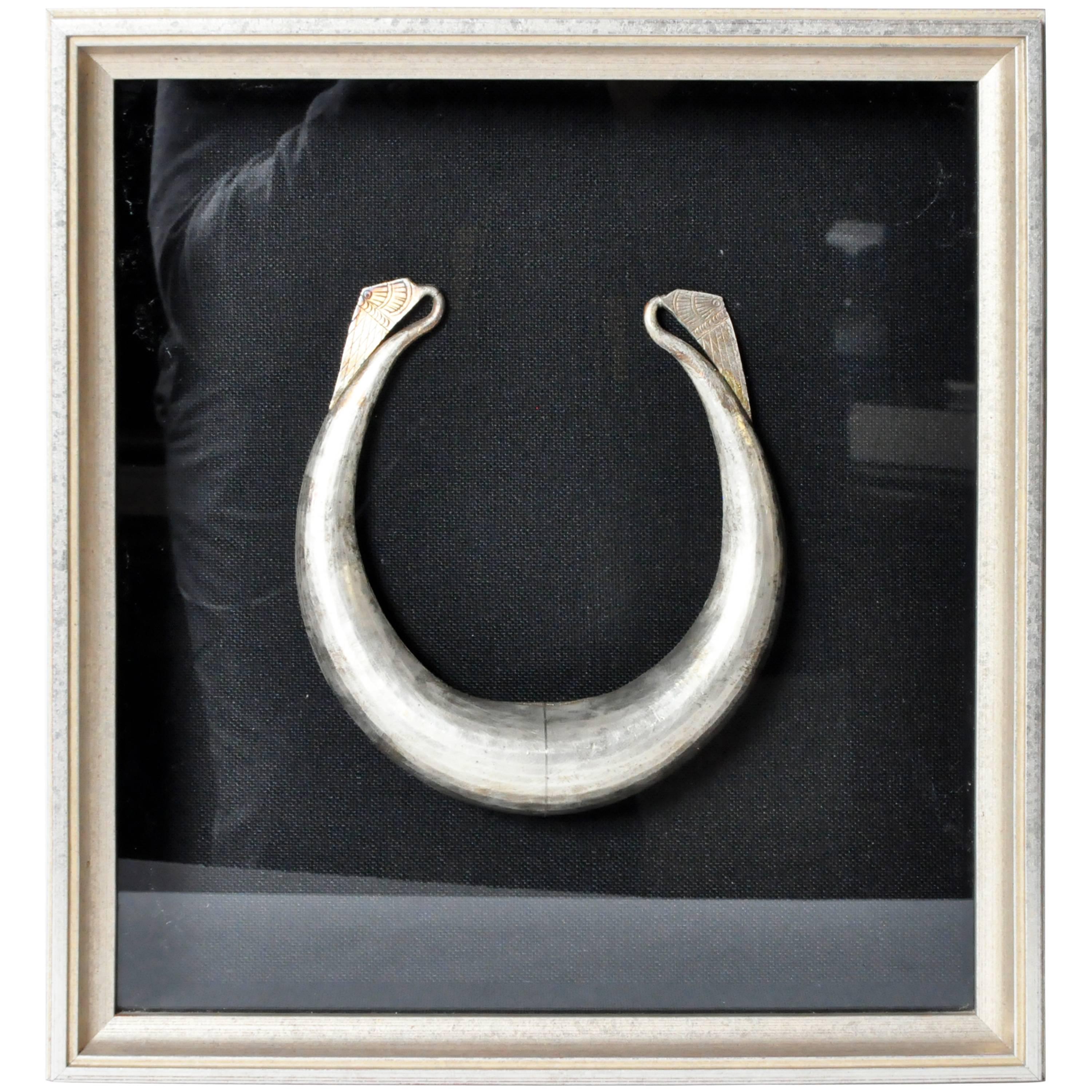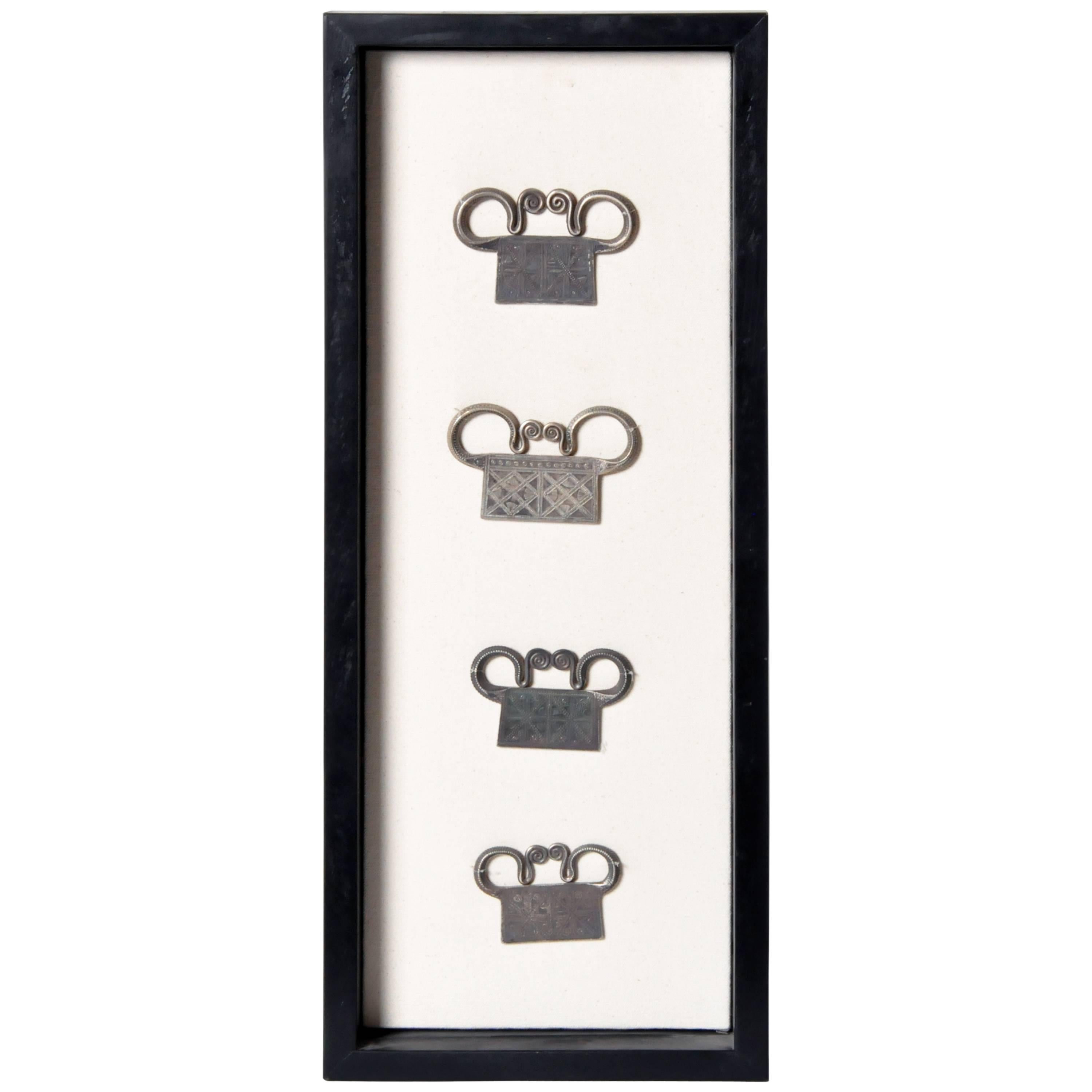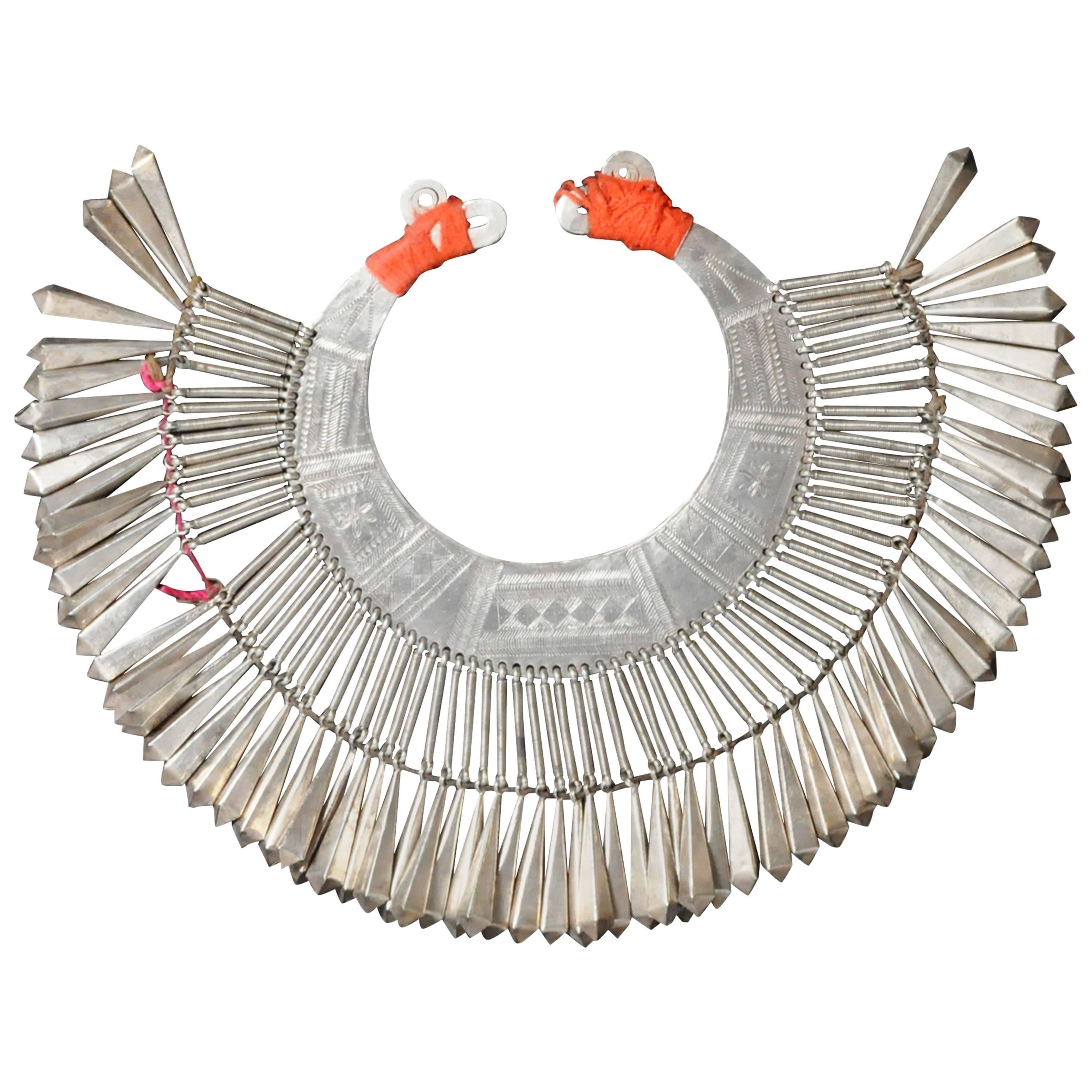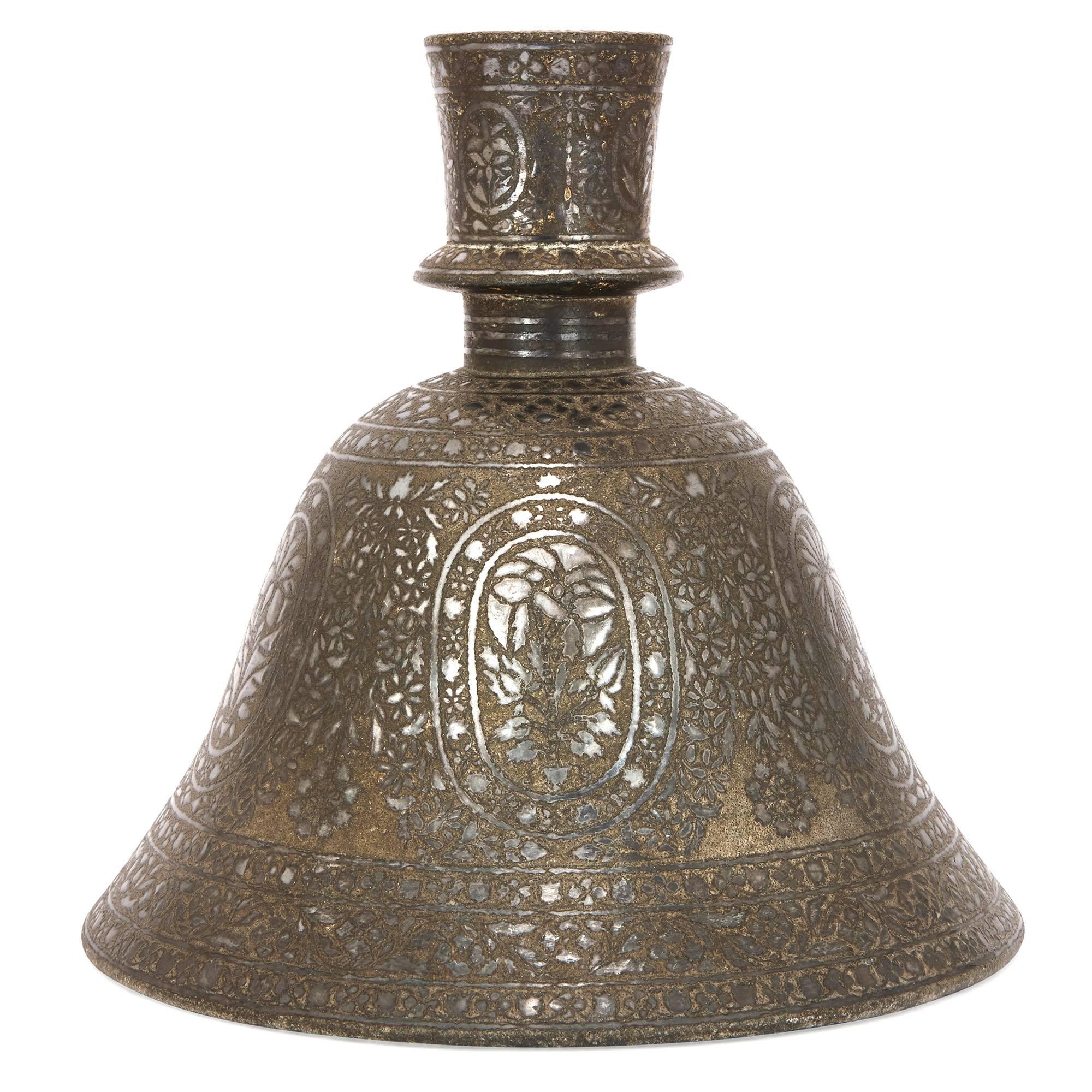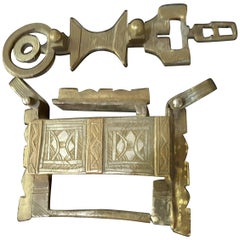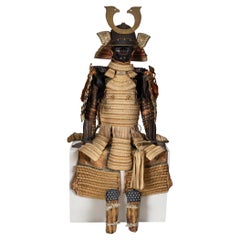
Hon-Kozane Ni-Mai Do Tosei Gusoku
View Similar Items
Want more images or videos?
Request additional images or videos from the seller
1 of 15
Hon-Kozane Ni-Mai Do Tosei Gusoku
About the Item
- Dimensions:Height: 59.06 in (150 cm)Width: 19.69 in (50 cm)Depth: 19.69 in (50 cm)
- Materials and Techniques:
- Place of Origin:
- Period:
- Date of Manufacture:circa 1750
- Condition:
- Seller Location:Milano, IT
- Reference Number:1stDibs: LU4250233585502
About the Seller
5.0
Recognized Seller
These prestigious sellers are industry leaders and represent the highest echelon for item quality and design.
Established in 2005
1stDibs seller since 2018
10 sales on 1stDibs
Typical response time: 3 hours
More From This SellerView All
- Hon-kozane ni-mai do tosei gusokuLocated in Milano, ITHon-kozane ni-mai do tosei gusoku Samurai armor in revival style Edo Period, 17th to 18th century Signature on kabuto: Jōshū jū Saotome Ietada Kabuto [helmet]: A russet iron (tetsu sabiji) sixty-two plate kabuto, each mounted with twenty-five small tapered standing rivets (ko-boshi) of decreasing size; the front plate, larger than the others, is fitted with two lines of rivets, while the rear one is left empty, for a total of 1.550 rivets. The typical "Saotome-byo", an extra rivet which is almost an additional signature of the Saotome armorers, is visible inside. Maedate [helmet crest]: Kuwagata (stylized horns) with shakudo kuwagata-dai (support) fitted with three hanabishi (flower-shaped family crest) and a large gilt-wood peony Menpō [mask]: A russet iron (tetsu sabiji) ressei-men (mask with fierce expression) Dō [cuirass]: Ni-mai dō (made in two parts) with hon-kozane (true scale) construction. Stencilled leather plates with engraved shakudo borders, fine pierced kanamono (application) bearing a hanabishi. Sode [shoulder guards]: Large type (ō-sode), with fine kanamono and decorations. Kote [sleeves]: In russet iron, with a hanabishi on the back of the hand (tekko). Haidate [thigh guard]: Of hakama type (full trousers), made of tied rectangular iron plates. Suneate [shin guards]: Finished in black urushi lacquer. Accessories: A saihai (commander’s baton); high-level kara-bitsu (storage box) With its large sode (shoulder guards) and old-fashioned construction, the style of the armor is reminiscent of the medieval suits...Category
Antique Late 17th Century Japanese Arms, Armor and Weapons
MaterialsIron
- Go-Mai Uchidashi Dō Tosei Gusoku Samurai Armor Decorated with an Embossed RabbitLocated in Milano, ITGo-mai uchidashi do tosei gusoku Samurai armor decorated with an embossed rabbit Edo period, 19th century This samurai armor is complete and original, with consistent elements...Category
Antique 19th Century Japanese Metalwork
MaterialsIron
$38,198Free Shipping - Dangae do tosei gusoku A blue-laced samurai armor with cuirass of double styleLocated in Milano, ITDangae do tosei gusoku A blue-laced samurai armor with cuirass of double style Edo Period, 18th century Kabuto [helmet]: Black lacquered eboshi-nari kabuto, in the form of this ...Category
Antique 18th Century Arms, Armor and Weapons
MaterialsIron
- Samurai Mask with a Fierce Expression Ressei MenpoLocated in Milano, ITSamurai mask with a fierce expression Ressei Menpo DATE Edo period (1615 - 1867), 18th century A red lacquered high-level mask, with fierce (res...Category
Antique 18th Century Japanese Metalwork
MaterialsIron
- Shinto Sunnobi Tanto by Takahashi Naganobu, 1846Located in Milano, ITA Shinto Sunnobi Tanto by Takahashi Naganobu, 1846 Unsho Takahashi Naganobu / A lucky day of August Koka san-nen (1846) Yokota became monk with this sword - NBTHK Tokubetsu Hozon To...Category
Antique 19th Century Japanese Metalwork
MaterialsIron
- Okitenugui Kabuto Samurai Helmet Shaped as a Head Towel Saika, Early Edo PeriodLocated in Milano, ITOkitenugui kabuto Samurai helmet shaped as a head towel Saika, early Edo period, 17th century The Haruta armorers who moved to Kii province in the early 17th century, took the name from the village where they worked, Saika, near Wakayama, possibly on request of the local daimyo, Asano Yukinaga, a great armour amateur. Specialised in the construction of plate helmets, they produced mainly two typologies of kabuto: one with six plates covered with a chrysanthemum-shaped plate on top and one shaped as a “head towel”, called okitenugui. The latter type of kabuto employs very heavy plates crafted in a curved manner and was improved in order to make it resistant to firearms. This okitenugui kabuto features some distinctive decorations of the Haruta school, including the application of cut-out iron elements, including eyebrows, washers and lozenge-shaped decorations on the sides. The ring on the top, however, is a rare feature and could be used to hold a small war flag.Category
Antique 17th Century Metalwork
MaterialsIron
You May Also Like
- Silver and Bronze Camel Chest Lock 19th Century, North AfricaLocated in Ottawa, OntarioA silver and bronze camel chest lock 19th century, North Africa, bought in Tunisia in the early 1960s directly from Nomads. The lock was used to lock valuables in chests which were then packed on camel caravans...Category
Antique Early 19th Century Tunisian Other Historical Memorabilia
MaterialsSilver, Bronze
- Antique circa 1920 Chinese Export Floor Standing Bell with Wrought Iron StandLocated in GBWe are delighted to offer for sale this exquisite circa 1920 Chinese Export floor standing bell on wrought iron stand A very well made and decorative...Category
Vintage 1920s Chinese Chinese Export Metalwork
MaterialsBrass, Wrought Iron
$1,564 Sale Price30% Off - 20th century French Old Cutler Signboard Metal and Wood Knife, 1940sLocated in LEGNY, FRVery rare and original 20th century large metal and wood knife maybe an old cutler signboard. The blade is made with metal and the handle is made with wood. Brass nails. Good con...Category
Vintage 1940s French Arms, Armor and Weapons
MaterialsMetal
$2,198 Sale Price20% Off - Old Tibetan Bronze Bell or CymbalLocated in Alessandria, PiemontePart of an antique Bronze bell or Cymbal, hand hammered - Tibet - half XIX century - can be hung from the ceiling. CYMBAL is a percussion instrument. Now it is used in many ensembles...Category
Antique 1850s Tibetan Tibetan Metalwork
MaterialsBronze
$549 Sale Price50% Off - Anglo Indian Fine Large Silver Embossed Deity Oval Locket Dated 1880Located in Bishop's Stortford, HertfordshireA very fine and large antique Anglo-Indian silver oval shaped locket heavily embossed with three figures dated September 1880. The large hinged locket has an internal recessed compar...Category
Antique 1870s Indian Anglo-Indian Collectible Jewelry
MaterialsSilver
- H’mong Tribe Silver Spirit Lock NecklaceLocated in Chicago, ILThis finely crafted piece was made high in the mountains of Southeast China, Laos, Thailand and Burma (modern day Myanmar) by an indigenous hill tribe. The Hmong people are known for...Category
20th Century Laotian Tribal Metalwork
MaterialsSilver
$11,250 Sale Price19% Off
Recently Viewed
View AllMore Ways To Browse
Antique Dors
18th Century Do
Eighteen Century
Antique Rivets
Antique Rivet
Antique Helmet
Antique Helmets
Helmet Antique
Antique Produce Scale
Antique Produce Scales
Antique Tags
Antique Tag
Antique Scale Plate
Bearing Plate
Painted And Stenciled Furniture
Brass And Gold Gilt 18th Century
Floral Shaped Plate
Iron Crest

